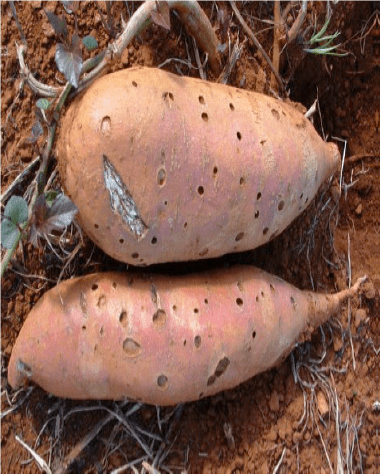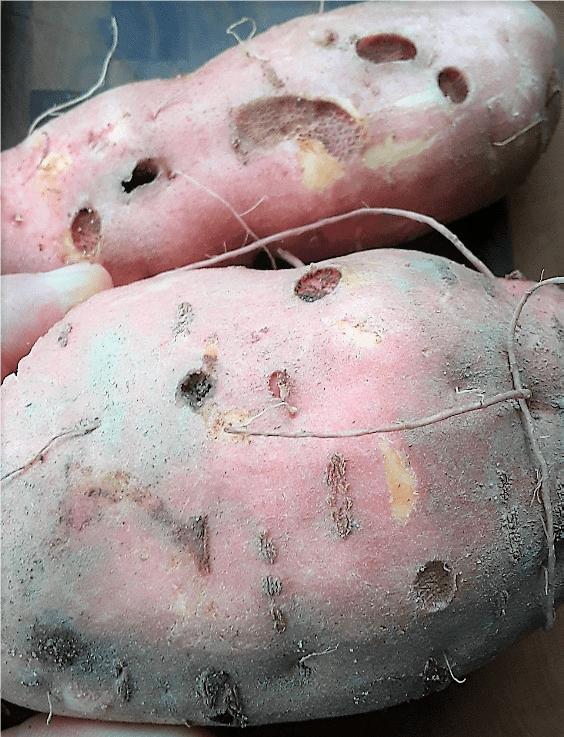Wireworms produce small 1/8-inch circular holes in the roots (fig. 1). Because the immature stage can last two or more years in the soil; if you have a wireworm problem now you will probably have it in the coming year in that field. To know whether or not you have wireworms in a new field you can screen for them in the fall or early spring using bait stations (a mixture of corn and wheat) placed in the soil 3 to 4 inches deep and removed and inspected for larvae 10 to 14 days later. White grubs are the immature stages of May and June beetles. White grubs bore large shallow holes into sweet potato roots that result in large feeding sites of half an inch or more in diameter (fig. 2). Grubs are relatively large (up to 1 inch), dirty white, C-shaped larvae with brown head capsules and three pairs of true legs near the head and no prolegs. These pests overwinter in the soil. Adults are active primarily in May and June and lay eggs in the soil with a preference for grasses, pastures, or weedy fields. White grub larvae can be present in the soil prior to planting if you plant into fields that are high in organic matter or were weedy. Of course there is nothing to be done now about controlling the damage. Because these soil pests can be so long lived in the damaging stage, how extensive the feeding damage is in an area and how large of an area is damaged will need to be noted. Large damage areas or extensive feeding damage to small areas will mean not to go back into this field for a couple of years with sweet potatoes. If other fields are of concern the bait stations can be used to see if insecticides are needed in the field for the next sweet potato crop. Control of wireworms and white grubs that are present in a field that is going into sweet potato is through the use of soil-applied insecticides before or during planting. The 2020-2021 Mid-Atlantic Commercial Vegetable Production Recommendations guide has instructions on these treatments.
Print Article
Return to Vegetable Insect IPM

